13 Awesome Wild Dog Species You Wish You Could Adopt
You already love man's best friend when he's domesticated, but you're going to wish you could own a member of these wild dog species.

Dogs are cool. They have been a companion to our species for thousands of years, and since that time, we have seen some really interesting breeds pop up out of domestication. We have curly-haired poodles, hairless Inca orchids, as well as a rarer dogs like the split-nosed Catalburun.
With all the attention that we lavish on our domesticated dogs, we often forget that there are still many wild dog species out there. I'm talking, of course, aside from your typical coyotes and grey wolves.
As of right now, there are many species of canidae that tend to be overlooked by both environmentalists and dog lovers alike. Here are some you probably would want to have as a pet—if they could be domesticated, that is.
Ethiopian Wolves

Did you know that Africa is home to tons of different wild dog species, including several wolves? It's true, and one of the rarest wolf breeds is the Ethiopian Wolf.
This wolf breed is known for its bright red coat, black ears, and bushy, multicolored tail—not unlike a fox! Their coats have made them prime targets for poachers, which is why there's only a scant 400 left in the wild.
Conservation efforts are underway, thankfully. Even so, it's a very rare species to spot due to overhunting, agriculture, and other human activity.
Red Wolves
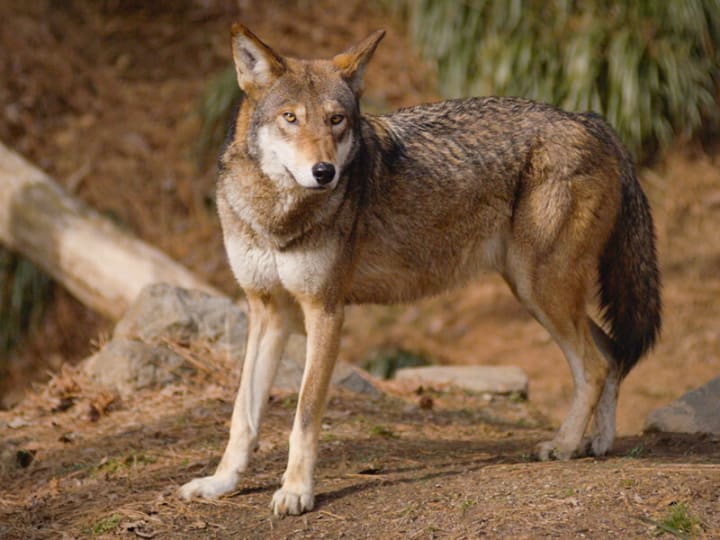
You might be surprised to hear this, but grey wolves weren't the only wild dogs that lived in the United States. A rarer species, the red wolf, thrived throughout Appalachia until hunters declared it a nuisance and almost wiped them out of existence.
Contrary to popular belief, the red wolf is not extinct. Around 200 red wolves exist in captivity, and recently, officials discovered a pack of red wolves near Galveston, Texas, as well as in certain pockets in North Carolina.
Mexican Grey Wolves

You are probably well-aware of North American grey wolves, primarily because they are on just about every single tie-dyed shirt that you'll find at a flea market. You might not realize, though, that there's a similar but separate wolf species native to Mexico.
The Mexican grey wolf was almost hunted out of existence until conservation efforts helped revive the species. Currently, only 300 wolves are found in captivity, but that's going to increase as long as efforts continue.
The big difference between North American wolves and Mexican wolves is the coat. Mexican grey wolves have a shaggier, more multi-colored coat, featuring shades of rust and black alongside standard grey.
African Wild Dogs
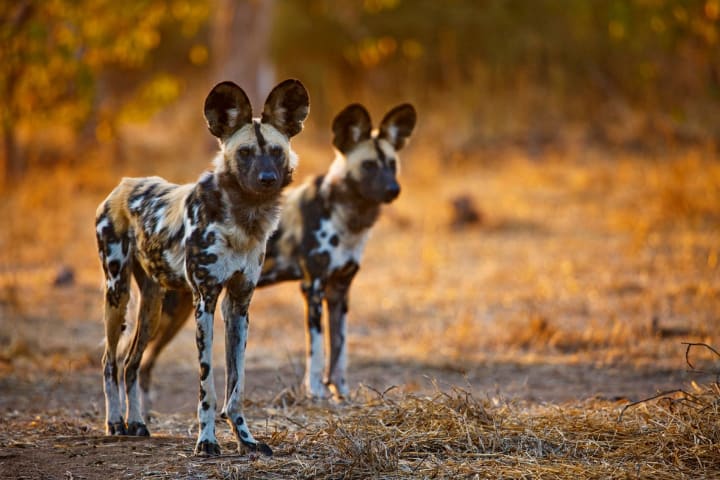
No, this image is not a painting or a Photoshopped mess. African wild dogs are also called "painted wolves" because they look like someone threw several cans of paint in their direction.
They have spots, stripes, large ears, and a very fierce disposition. These large dogs hunt in packs, can run up to 44 miles per hour, and can easily take down a gazelle if they feel like it,
Okay, maybe this one shouldn't be domesticated. It's kind of cute, but dangerous.
Perhaps one of the strangest wild dog species that skates under the radar is the Amazonian short-eared dog. This wild dog doesn't actually look like a dog, per se. It looks more like a raccoon or red panda's relative, doesn't it?
Despite the strange appearance, the short-eared dog is definitely a member of the Canis family. Along with a more feline-than-normal appearance, it also has a very feline gait. Unlike other wild dogs, it doesn't hunt game.
It eats fish, insects, and small rodents. Surprising? It's probably because it's the only surviving member of the genus Atelocynus.
Bush Dogs
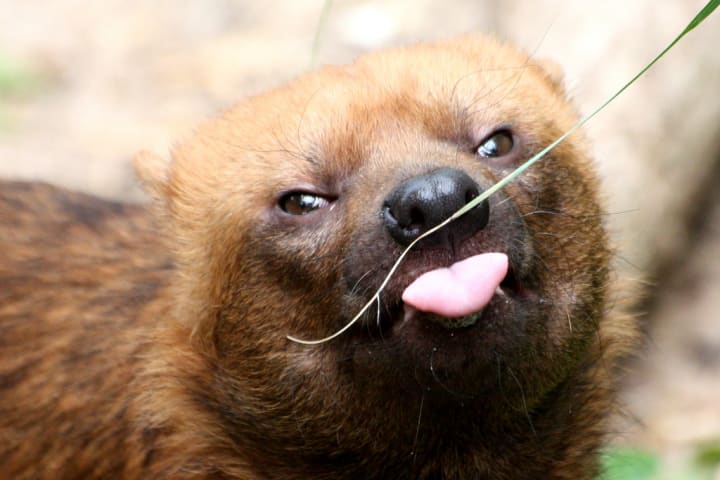
Incoming! Here's another strange, wild dog that doesn't actually look like a dog at first glance: the bush dog. This otter-like dog is as aquatic as feral dogs get, and even evolved to have webbed toes for faster swimming.
These cute, South American dogs are pretty tiny compared to other species on this list. Don't you just want to hold them? They look like tiny teddy bears!
Raccoon Dogs

Named for its uncanny resemblance to the common trash panda, raccoon dogs are actually one of the more notable collections of wild dog species on this list. Surprisingly, they are not related to raccoons in the least bit!
This cute species of wild dog is indigenous to East Asia and Japan, where most locals know it as a tanuki. There are several subspecies of raccoon dogs; including the Ussuri raccoon dog, the Japanese raccoon dog, and the Korean raccoon dog.
Look at how cute they are! They don't even bark; they let out whining noises instead. Don't you want to hand them a cute rodent or fish to eat?
Maned Wolf
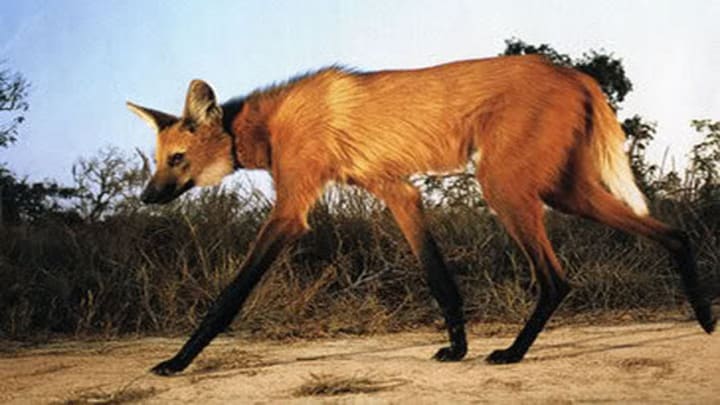
Maned wolves are another type of wild dog that really, truly do look like they were run through a Photoshop spree. Their unusually long legs and red coats make them appear like a "fox on stilts," leaving no uncertainty when answering the question, "Is a fox a cat or a dog?"
Oddly enough, they are neither a fox nor a wolf. Recent genetic testing showed that this is the only living species of the genus Chrysocyon. Let's just call them a wolf-like creature.
These wolves are pretty friggin' huge, and are actually the largest wolf-like species in South America. A typical maned wolf will grow up to 47 pounds and three feet in height.
Crab-Eating Fox
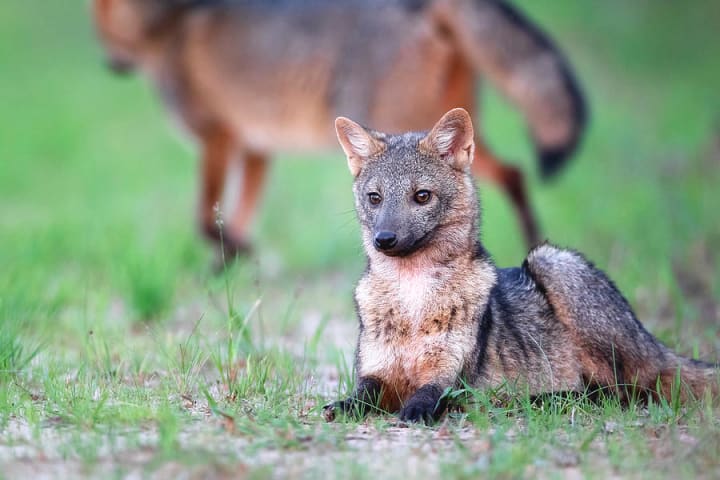
Most people think of wild dogs and expect them to hunt land-dwelling creatures and fish. But, what about crabs? If you had a crab-eating fox as a pet, you would be surprised to find that your wild pup had a penchant for shellfish.
This rare, wild dog can be found in the more rural parts of South America, and also eats other small critters like frogs and rats. At a maximum weight of 13 pounds, he's a tiny feller!
Dhole

The dhole is a strange member of the Canis family, indeed. This strange wild dog species is remarkable for several reasons: its bright orange coat, its higher number of teats, its lower number of teeth, and the strange whistling noise it makes.
It's not the only wild dog that doesn't bark, but it is one of the very few that whistle. You can find packs of these strange critters in the Himalayas, as well as certain parts of Russia.
New Guinea Singing Dogs
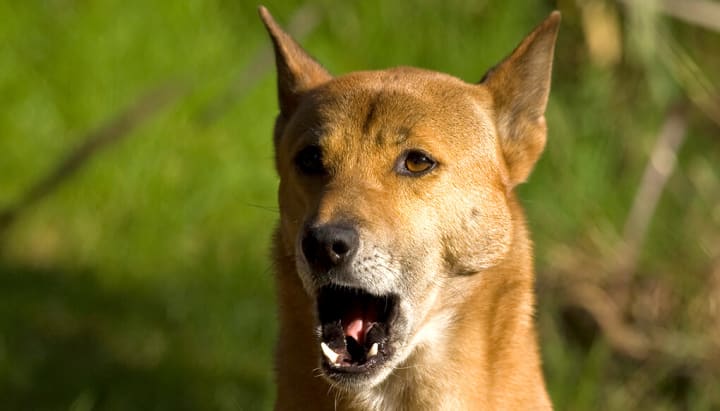
As previously stated, there are some domesticated dog species that don't bark. One such dog is the African basenji. What you might not realize is that there's a species of wild dog that looks like a cross between a dingo and a wolf that "sings," too.
These dogs are native to New Guinea, but unlike other wild dogs, are now slowly being adopted by humans. So, if you like this cute not-so-little red pupper, you can possibly adopt them in the future—if you can handle their ear-splitting yowls.
That being said, they're one of the rarest dogs in the world, and are actually facing conservation efforts. Therefore, finding one for adoption is a little more than a little difficult.
Bat-Eared Foxes

People who are fans of large puppy ears will probably fall in love with bat-eared foxes. These giant-eared foxes are known for being intelligent, escape artists, and super cunning hunters.
These African wild dogs are pretty adorable and incredibly small. As a result, their main diet is composed of termites, dung beetles, and tiny insects. They are totally harmless to humans.
Can we please domesticate them? They're just so cute!
Black-Backed Jackal

The black-backed jackal is a wild dog species that really has a vicious bite for its size. This jackal can be found in several different pockets in Africa, and have become pretty notorious for their ability to hunt gazelles, antelope, and domesticated livestock.
They're wily at escaping hunters, and yet, still retain an incredibly stately look about them. Aren't they gorgeous?
About the Creator
Rowan Marley
Rowan Marley is a 20-year-old sports enthusiast who hails from Brooklyn. When he's not hitting up a local Zumba class, he's drinking organic smoothies. That's just how he rolls.






Comments
There are no comments for this story
Be the first to respond and start the conversation.